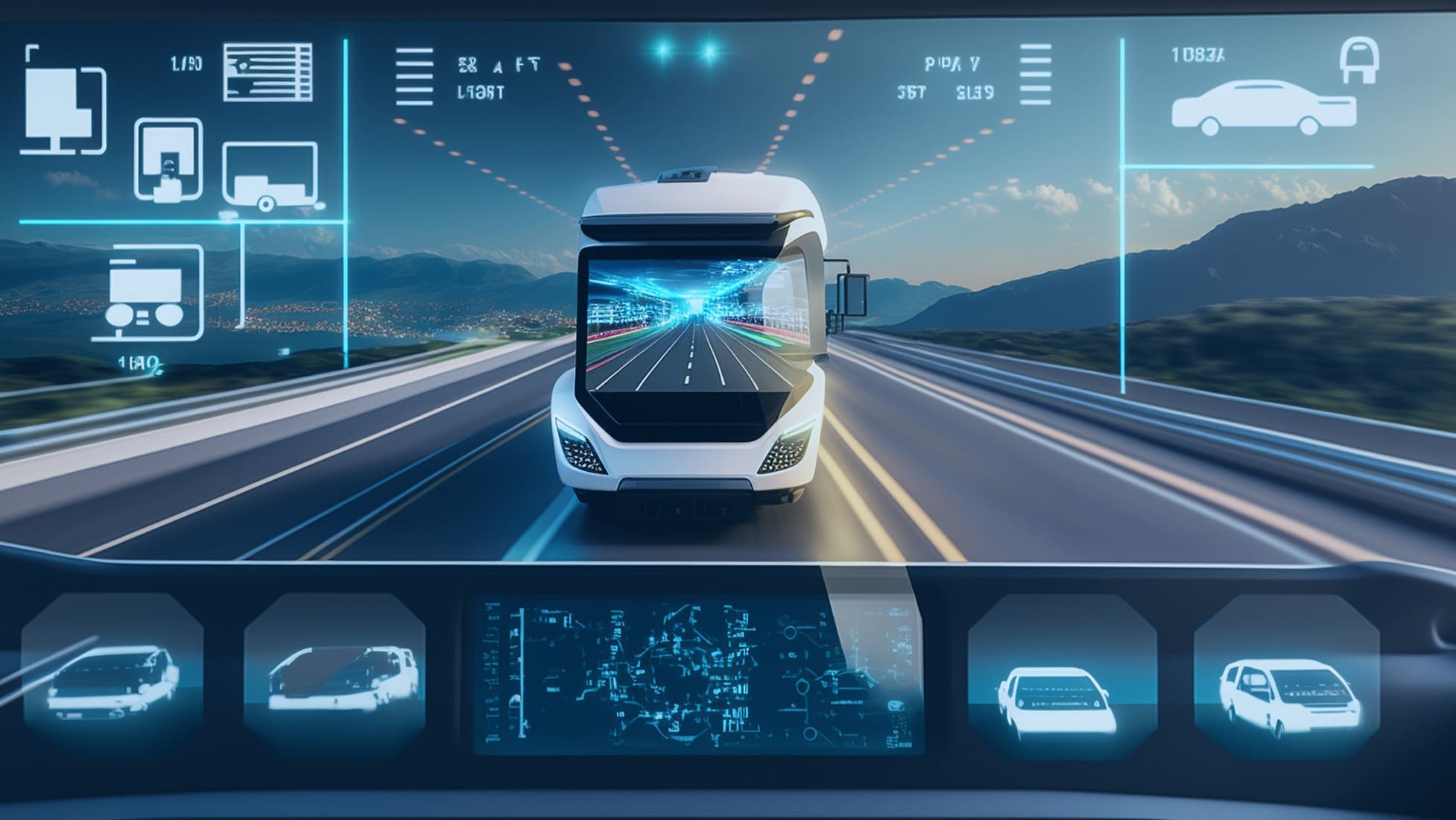
What is Fleet Telematics?
Fleet telematics refers to the application of telecommunications and information technology to enhance the management of fleet vehicles. This technology combines GPS systems, onboard diagnostics, and mobile tech to track, analyze, and optimize vehicle operations. The primary goal is to gain real-time insights into vehicle location, driver behavior, vehicle health, and more, facilitating better control and management of fleet resources.
Key Components of Fleet Telematics
- GPS Tracking: This is the cornerstone of fleet telematics. GPS tracking devices installed in vehicles provide real-time data on vehicle location and movements. This aids in route optimization, theft prevention, and better scheduling.
- Vehicle Diagnostics: Telematics devices are often connected to a vehicle’s onboard diagnostics (OBD) port. This allows for real-time monitoring of vehicle health, including engine performance, fuel usage, and maintenance alerts.
- Driver Behavior Monitoring: Telematics technology can track driving patterns such as speed, hard braking, rapid acceleration, and idle time. This data helps in assessing driver performance and implementing training programs for safer driving practices.
- Data Communication and Analysis: The data collected through telematics devices is transmitted to a central server. Here, advanced fleet management software analyzes this data, providing actionable insights to fleet managers.
Advanced Fleet Management Software
This software plays a pivotal role in leveraging the data provided by telematics. Key features include:
- Data Visualization: Dashboards that display real-time information on fleet operations.
- Route Planning and Optimization: Tools that help in creating efficient routes, reducing travel time and fuel consumption.
- Maintenance Scheduling: Automated alerts for regular maintenance checks, helping avoid breakdowns and prolong vehicle life.
- Compliance Management: Ensuring vehicles and drivers comply with regulatory requirements.
Benefits of Fleet Telematics
Fleet telematics offers a wide array of advantages that transform how fleet operations are managed. Here’s a detailed look into these benefits:
1. Enhanced Operational Efficiency
- Route Optimization: Telematics systems enable real-time tracking and management of vehicles, allowing for more efficient route planning. This not only reduces fuel consumption but also minimizes wear and tear on vehicles.
- Vehicle Utilization: By analyzing vehicle usage patterns, fleet managers can optimize their fleet size, ensuring that each vehicle is used to its maximum potential.
- Time Management: Telematics helps in identifying inefficiencies in operations, such as unnecessary idling or detours, thereby saving time and resources.
2. Cost Reduction
- Fuel Savings: One of the most significant expenses in fleet management is fuel consumption. Telematics aids in monitoring fuel usage and identifying areas where fuel efficiency can be improved.
- Maintenance Costs: Preventive maintenance alerts generated by telematics systems help in addressing vehicle issues before they become costly repairs.
- Insurance Premiums: Many insurance companies offer discounts for fleets equipped with telematics devices due to the reduced risk of accidents and thefts.
3. Improved Safety and Compliance
- Driver Behavior Monitoring: Telematics tracks behaviors such as speeding, harsh braking, and rapid acceleration, which are indicators of unsafe driving. This data can be used for targeted driver training and improving overall safety.
- Accident Response: In case of an accident, telematics systems can immediately alert fleet managers, enabling quick response and support for the driver.
- Regulatory Compliance: With regulations like ELD mandates, telematics ensures that fleets adhere to legal requirements, thereby avoiding fines and penalties.
4. Enhanced Customer Service
- Real-Time Updates: Telematics allows for providing real-time updates to customers regarding the whereabouts of their deliveries, enhancing transparency and trust.
- Service Reliability: Improved route planning and vehicle maintenance lead to fewer breakdowns and delays, ensuring reliable service.
5. Environmental Impact
- Eco-Friendly Operations: By optimizing routes and reducing idle time, telematics contributes to lower fuel consumption and emissions, promoting environmentally friendly practices.
6. Data-Driven Decision Making
- Insightful Reporting: Telematics systems offer comprehensive reporting tools that provide insights into fleet performance, helping managers make informed decisions.
- Customizable Alerts and Reports: Fleet managers can set up customized alerts for specific events and generate reports tailored to their needs, enhancing the effectiveness of fleet management.
7. Scalability and Flexibility
- Adaptability to Business Needs: Telematics systems can be scaled and customized according to the specific needs of a business, whether it’s a small fleet or a large enterprise.
- Integration with Other Systems: Telematics can be integrated with other business systems like ERP or CRM, providing a holistic view of operations.
Challenges and Considerations
- Data Privacy and Security: Ensuring the security of the vast amount of data collected is critical.
- Technology Integration: Seamlessly integrating telematics with existing systems can be challenging.
- Driver Acceptance: Encouraging drivers to embrace these technologies and understanding their concerns is crucial for successful implementation.
The Role of Advanced Fleet Management Software
Advanced fleet management software is at the heart of fleet telematics. It integrates data from telematics devices to provide comprehensive insights into fleet operations. This software facilitates better decision-making, enhances operational efficiency, and improves safety standards.
The Impact of Fleet Telematics on Transportation
Fleet telematics is transforming the transportation sector in numerous ways:
1. Enhanced Operational Efficiency
Telematics systems provide real-time data on vehicle location, speed, and route. This information helps in optimizing routes, reducing fuel consumption, and enhancing overall operational efficiency.
2. Improved Safety Standards
By monitoring driver behavior and vehicle performance, fleet telematics plays a crucial role in improving safety standards. It helps in identifying risky driving behaviors and ensuring timely maintenance of vehicles.
3. Better Compliance Management
Telematics assists in adhering to regulatory requirements, including Hours of Service (HOS) and Electronic Logging Device (ELD) mandates. This ensures compliance and avoids potential legal issues.
Trends in Fleet Telematics
The world of fleet telematics is constantly evolving, with new trends shaping its future:
1. Integration with Advanced Technologies
The integration of telematics with technologies like AI and IoT is enhancing its capabilities. This includes predictive analytics for vehicle maintenance and improved route optimization algorithms.
2. Focus on Sustainability
With growing environmental concerns, telematics is playing a pivotal role in promoting sustainable practices in transportation. This includes monitoring fuel consumption and reducing carbon emissions.
3. Enhanced Data Security
As telematics systems handle vast amounts of data, ensuring its security is paramount. The industry is witnessing a trend towards more robust data protection measures.
The Future of Fleet Telematics
As we look towards the future, fleet telematics is poised for more revolutionary changes. Understanding these upcoming trends and innovations is crucial for businesses to stay ahead in the dynamic field of transportation.
1. Integration with Emerging Technologies
- Artificial Intelligence (AI) and Machine Learning: AI and machine learning are set to take fleet telematics to new heights. With these technologies, telematics systems can predict vehicle maintenance needs, optimize routes more effectively, and provide more accurate driver behavior analysis.
- Internet of Things (IoT): IoT technology will enable a more interconnected fleet. Vehicles will not only communicate with the central fleet management system but also with each other and with infrastructure (V2X – Vehicle-to-Everything communication), leading to improved traffic management and safety.
2. Autonomous and Electric Vehicles
- Autonomous Vehicles: The integration of telematics with autonomous vehicle technology is a game-changer. It will transform fleet management strategies, focusing on remote monitoring and control of driverless fleets.
- Electric Vehicles (EVs): As EVs become more prevalent, telematics will play a critical role in monitoring battery health, optimizing charging schedules, and integrating with smart grid systems.
3. Advanced Data Analytics and Customization
- Predictive Analytics: Future telematics systems will employ advanced analytics to predict issues and optimize fleet operations proactively.
- Personalized Solutions: Telematics providers will offer more customized solutions tailored to specific industry needs and business models, enhancing the value of telematics data.
4. Enhanced Connectivity and Real-time Data Processing
- 5G Technology: The adoption of 5G will enable faster and more reliable data transmission, enhancing real-time tracking and decision-making capabilities.
- Edge Computing: With edge computing, data processing occurs closer to where it is needed, reducing latency and enabling more immediate responses to critical data.
5. Focus on Sustainability and Environmental Responsibility
- Carbon Footprint Reduction: Telematics will increasingly focus on helping fleets reduce their carbon footprint through route optimization and monitoring of fuel-efficient driving practices.
- Support for Green Initiatives: As environmental regulations tighten, telematics will become essential in ensuring compliance and supporting green initiatives.
6. Enhanced Security and Privacy Measures
- Cybersecurity: With the increasing amount of data being processed, the importance of cybersecurity in telematics cannot be overstated. Future developments will likely focus on robust security measures to protect sensitive data.
- Privacy Concerns: Addressing privacy concerns will be crucial, especially regarding driver monitoring and data sharing.
7. Increased Adoption and Global Expansion
- Broader Adoption: Telematics will see increased adoption across various industries beyond traditional logistics and transportation.
- Global Market Expansion: The global expansion of telematics services will lead to more standardized solutions that cater to different regional requirements and regulations.
Embracing the Change
As telematics continues to evolve, it is essential for transportation businesses to embrace this technology. Investing in advanced fleet management software and staying abreast of emerging trends is crucial for success.
Conclusion
Fleet telematics is not just a technological advancement; it’s a revolution in the transportation sector. Its impact on operational efficiency, safety, and sustainability is undeniable. As we move forward, the integration of telematics into transportation will continue to grow, shaping the future of how we move goods and people.


